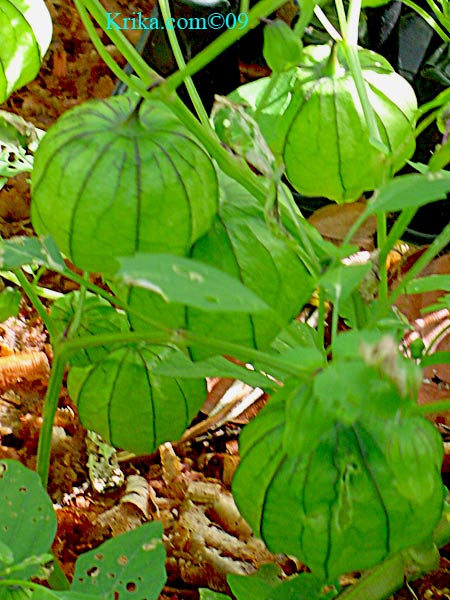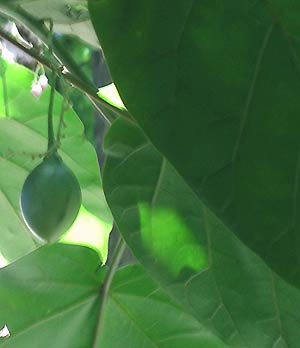| GreenGardeningCookingCuring.com | T
PAGE |
| HOME |
| Tour Our Destination Websites | Taxco-Today.com | Oaxaca-Today.com | Montserrat-Today Site |
| See our silver designs at Krika.com | Read our travel stories and other tales at Krika.com |
|
|
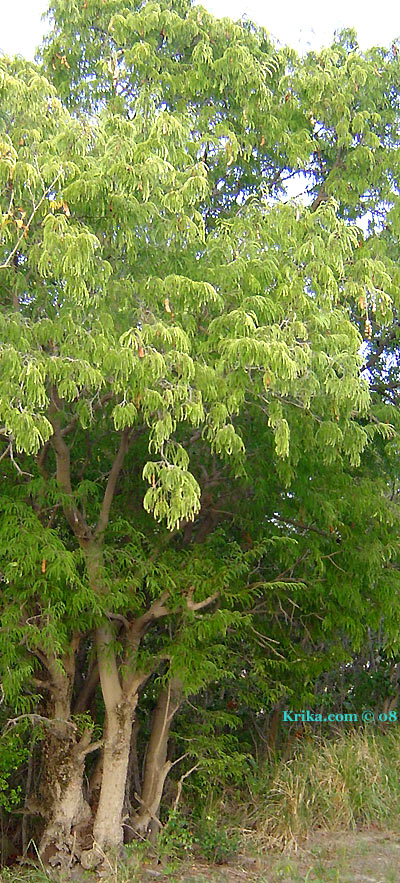 Tamarind
Tree Lysiloma sabicu or Tamarindus
indica or Leucaena leucocephala or Leucaena
glauca or Mimosa leucocephala or Acacia
leucocephafa Tamarind
Tree Lysiloma sabicu or Tamarindus
indica or Leucaena leucocephala or Leucaena
glauca or Mimosa leucocephala or Acacia
leucocephafaNo matter how you identify it, this is a wonderful tree bearing four to six inch brown lumpy and a little hairy pods with sticky tamarind paste and seeds enclosed. In good times hundreds of these pods hang all over the tree. Over the years the trees will grow to be from thirty to eighty feet tall and will be about two thirds as wide as they are high. Benefits: "Tamarind is full of antioxidants which help prevent cancer. This sweet and tangy fruit powerhouse is also an excellent source of vitamin A, B1, B2, B3, vitamin C and folic acid." Thanks Yahoo. From: Africa Photographed: This beautiful tree was photographed along side the road in our neighborhood in Montserrat. Planting & Care: Tamarinds like good loamy soil and lots of rain. On the down side they don't grow very quickly, but on the up side they are resistant to heavy winds which in Montserrat was a genuine blessing. Full sun is their favored location, though they will put up with a bit of shade. When young they do like being fertilized. Text and Photograph ©Krika.com 2008 For
More Information: See this web site |
|||
 Tapeworm
Plant, Centipede Plant, Ribbonbush Homalocladium
platycladum, Muehlenbeckia platyclada Tapeworm
Plant, Centipede Plant, Ribbonbush Homalocladium
platycladum, Muehlenbeckia platycladaBenefits: From: The Pacific Photographed: At the Hotel Atitlan on Lake Atitlan in Guatemala in 2010. Planting and Care: This odd looking plant will tolerate a wide range of light situations, but does best in semi shade as long as it receives regular rainfall or routine watering. Text & Photograph ©KO 2010 |
|||
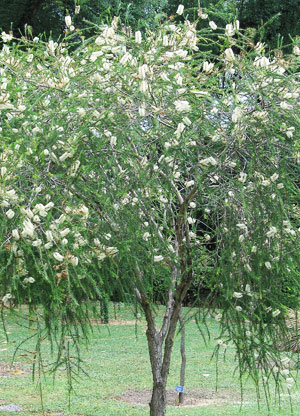 Tea
Tree, Melaleuca, Narrow-Leaved Paperbark, Breath Away,
Ti Tree, Narrow-Leaved Tea-Tree, Snow-in-Summer Melaleuca
alternifolia Tea
Tree, Melaleuca, Narrow-Leaved Paperbark, Breath Away,
Ti Tree, Narrow-Leaved Tea-Tree, Snow-in-Summer Melaleuca
alternifoliaThis is a small tree growing to be about 20 feet tall when mature as in the photograph or it may be considered a shrub. Benefits: This tree has provided medicinal benefits in Australia for more than a century. It has been used topically for infections of the skin and in a variety of other applications. From: Australia Photographed: In the Botanical Garden in Naples, Italy. Planting and Care: Melaleuca likes to grow in full sun in a variety of moist soils. Text and Photograph ©GreenGardeningCookingCuring.com 2012/2018 |
|||
 **Texas
Bluebell Eustoma grandiflorum **Texas
Bluebell Eustoma grandiflorumThis plant reminds me much of pansies for its soft petaled flowers. It is one of my favorites. Its foliage is a waxy grayish green, also very appealing when the plant is not in bloom. Benefits: From: Photographed: To the right in the Blithewold Garden in Bristol, Rhode Island, in 2013. Below on the right as a bouquet in the kitchen of our apartment in Oaxaca, Mexico in 2010 and on the left also in the Blithewold Garden in 2013. Planting and Care: I have tried growing these in my garden in Panajachel, Guatemala. It lies in the mountains at about a mile high and has a year round spring like temperature with very bright and hot sun. I have had no luck so far. Text and Photograph ©GreenGardeningCookingCuring.com 2010 |
|||
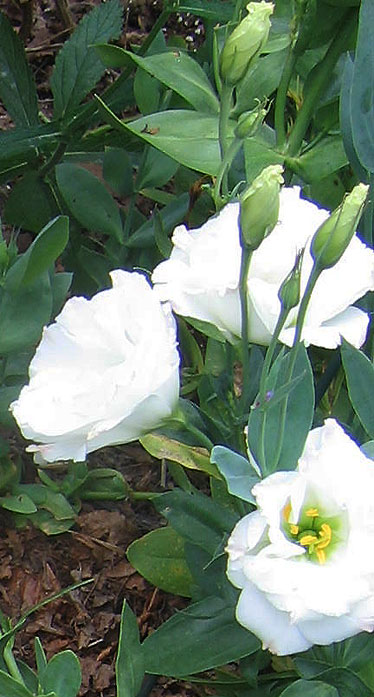  |
|||
  Thai
Rose Mandevilla amabilis Thai
Rose Mandevilla amabilisThis stunner of a vine not only blooms most of the year, but does so without being too fussy. And, as you can see in the photographs you can have it in either the simple or the extravagant flowering form. Benefits: The Thai rose is as attractive to butterflies and hummingbirds as it is to us. From: Brazil Photographed: On the left and right in the Botanical Garden at the Hotel Atitlan on Lake Atitlan in Guatemala in July of 2010. The photograph below was taken in the Winter Garden in Auckland, New Zealand, in 2014. Below that on the left and right in the Winter Garden in Auckland, New Zealand, in 2014. Planting and Care: This vine will be at its best in full sun or a bright semi shady area of the garden. Give it regular watering or routine rainfall. Text & Photographs ©GreenGardeningCookingCuring.com 2013 |
|||
|
|||
  |
|||
| Thelma's Pink Brazilian Plume See the "B" Page -- BRAZILIAN PLUME FLOWER (PINK) | |||
| Thelma's Pink Justicia See the "B" Page -- BRAZILIAN PLUME FLOWER (PINK) | |||
  Black
Eyed Susan Vine Thunbergia
alata Black
Eyed Susan Vine Thunbergia
alataThis is a delicate vine with small very appealing flowers ranging from white through yellow to orange and all have the distinctive "black eye." Benefits: From: East Africa Photographed: On the left at the Hotel San Buenaventura on Lake Atitlan in Guatemala in May 2010 and on the right in the Thuya Garden, Mt. Desert Island, Maine, 2013. Planting and Care: This little vine likes it sunny and moist and will be a perennial once it settles in. It is not winter hardy. Text and Photograph ©KO 2010 and ©GreenGardeningCookingCuring.com 2013 |
|||
 **Clock
Vine, Blue Trumpet Vine, Sky Vine Thunbergia
grandiflora **Clock
Vine, Blue Trumpet Vine, Sky Vine Thunbergia
grandifloraWe planted a small clock vine to the side of a tree we didn't like much, but didn't want to cut down because of the shade it provided to our home from the blistering afternoon sun in Montserrat. In just a few years, the vine grew to the top of the tree and the vines beautiful flowers made a relatively unattractive tree a visual treat. Benefits: From: Photographed: In our garden at our former home in Montserrat. Planting and Growth: This lovely vine likes a rich soil or a good bit of fertilizer along with regular watering or rainfall. It thrives in a semi shady location, but will handle a bit more sun if given adequate moisture. Text & Photograph ©KO 2008 |
|||
|
|||
 **King's
Mantle, Bush Clock Vine Thunbergia erecta **King's
Mantle, Bush Clock Vine Thunbergia erectaThis is yet one more very appealing plant in the Thunbergia family. This one is less of a vine and more of a bush. We now have one in our front garden here at Lake Atitlan in Guatemala. It is recovering well from being recently transplanted. Benefits: Its lovely blue flowers are bee, butterfly and hummingbird attractants. From: Tropical Africa Photographed: In the Botanical Garden at the Hotel Atitlan on Lake Atitlan in Guatemala. Planting and Care: Set in a place with full sun and routine rainfall or watering this plant should do very well. Text & Photograph ©KO 2010/2012 |
|||
|
|||
 Orange
Clock Vine Thunbergia gregorii Orange
Clock Vine Thunbergia gregoriiThis is a very lovely light hearted quickly spreading colorful vine that should find a little space in every garden. Benefits: From: Photographed: In the Botanical Garden at the Hotel Atitlan on Lake Atitlan in Guatemala in July of 2010. Planting and Care: Full sun or semi shade will do fine for this little treasure as long as it gets regular rainfall or watering. It may even be winter hardy so give it a try. It will die back with the first real frost, but it may very well show up again in the spring. Text and Photograph ©KO 2010 |
|||
|
|||
 **Thunbergia
mysorensis (no common name yet) GET COMMON NAME **Thunbergia
mysorensis (no common name yet) GET COMMON NAMEThis is one of those serendipitous events because when visiting Panajachel I had seen and fallen in love with this vine. I brought seeds back to our home in Montserrat which we soon sold. Later, moving back to Panajachel we found a home with a thriving vine shading half of the large front terrace. How lucky is that?! Benefits: This looker attracts butterflies and hummingbirds and produces endless flowers. From: India Photographed: At our home and in others while we lived In Panajachel on Lake Atitlan in Guatemala. Planting and Care: This plant will do best in a semi shady area and will do fine with medium to low watering. I was recently warned by a new friend in Panajachel that this plant has to be severely cut back on a routine basis or it will take over the world. Maybe something so beautiful should be allowed to do just that. Text and Photograph ©KO 2010 and ©GreenGardeningCookingCuring.com 2012 |
|||
  |
|||
Thunbergia Curtain |
|||
 Thunbergia
White Gem Thunbergia fragrans Thunbergia
White Gem Thunbergia fragransThis is a very attractive fast growing vine. Its strikingly white flowers are like eye candy especially set against the dark green lush foliage. Benefits: As with so many tropical flowers, this one too attracts butterflies and hummingbirds. From: India Photographed: In the Botanical Garden at the Hotel Atitlan on Lake Atitlan in Guatemala in July of 2010. Planting and Care: This is a pretty easy going plant liking full sun or semi shade and routine rainfall or watering. Text and Photograph ©KO 2010 |
|||
| **French
Thyme (1) Thymus
vulgaris L. or Curcuma procumbens When we were living in Montserrat, French thyme was preferred by people there as they knew it was preferred in the United States and Britain. Sadly, in Montserrat it was very difficult to grow, less flavorful than the easy to grow Spanish thyme described below and it was extremely rarely available. Once in a great while in any year you will find a small bunch of French thyme for sale at an extortionate price in one of the roadside stands. Benefits: Thyme has many uses apart from its flavorful contributions in the kitchen. As a tea it is used effectively to treat everything from coughs and colds to headaches and hangovers. From: Photographed: Below on the left in the (Ortobotanico) Botanical Garden in Naples, Italy, in 2014. Below on the right in our garden at Lake Atitlan in the highlands of Guatemala. Planting and Care: The tough little perennial plants in the photograph below were grown from seed and planted out in our garden when they were very small and looking very fragile. They have flourished and now live happily in a semi shady area of the garden with routine rainfall or watering. A now and again dose of fertilizer is always beneficial. Text and Photograph ©GreenGardeningCookingCuring.com 2015 |
|||
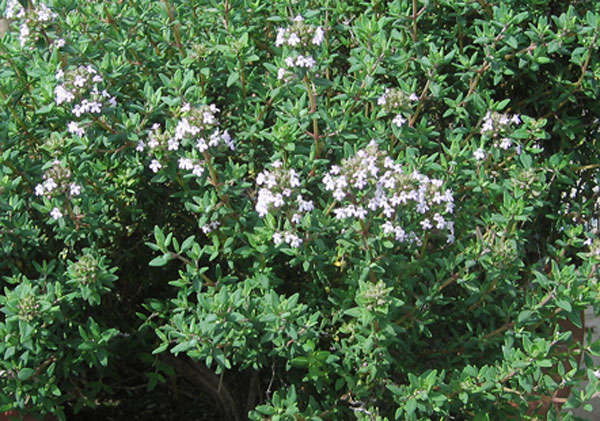  |
|||
| **Spanish
Thyme, Broad-Leaf-Thyme, Cuban Oregano, Cuban Thyme,
Indian Borage Plectranthus
amboinicus or Solenostemon
amboinicus or Coleus amboinicus GET CORRECT
LATIN NAME This is truly a wonderful plant. It is extremely easy to grow, performing more like a weed than a valued plant and it tastes better than French thyme! WOW, it doesn't get better than that! Aside from using it fresh from the garden in anything we are preparing that calls for thyme. Benefits: This thyme is also used as a tea in Montserrat, but we don't know what the health benefits are apart from those we derive from having a lovely cup of tea. From: Tropical Americas Photographed: Immediately below in our herb garden at our former home in Montserrat and below those in our herb garden at our home at Lake Atitlan in Guatemala. Planting and Growth: These fleshy plants are easy to grow and to propagate. In the tropics pick a semi shady location for summer plantings or a sunny one for the winter. Take a six inch cutting from a healthy plant and stick it in decent soil. Give it some water and it will be off and running. These plants are heavy feeders, so don't stint on the fertilizer, compost or manure when you can get it. After letting the original plant grow for a year, take a cutting and start over. These plants seem to age more quickly than most, loosing their beautiful appearance. Text and Photograph ©Krika.com 2008 and ©GreenGardeningCookingCuring.com 2014 |
|||
|
|||
|
|||
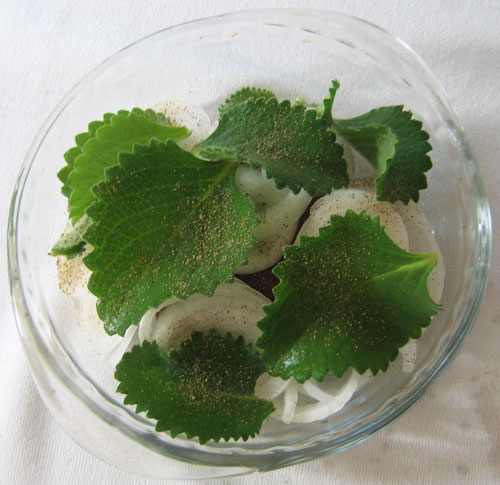
RECIPE 1
lb of 1 1/2 " thick filet of fish Butter a 9" glass pie pan, place fish in the middle and cover with the sliced onions. Sprinkle the Cuban thyme leaves on top and grate the pepper over all. Cover tightly with a glass top or foil and bake in a 350° oven 45 minutes to an hour. When serving discard the cooked Cuban thyme leaves, but decorate the serving plate with a couple of fresh ones intermixed with yellow lemon wedges. Photographed: In our kitchen at our home at Lake Atitlan in Guatemala. |
|||
| **Ti
Plant, Hawaiian Ti Leaf, Good Luck Plant Cordyline
fruticosa or Cordyline terminalis The bright red and deep pink leaves, or green and pink leaves or green and white leaves of the members of this family make a great addition to the non-flowering plants in the garden. The fact that it is a great survivor as well puts it high on my list of favorites! This very colorful leafy plant can grow to a height of about twelve feet. Its leaves are about fifteen inches long and are an appealing blend colors. Benefits: From: The Pacific Planting and Care: Ti plants prefer bright shade to come into their own and they are very receptive to regular rainfall, but they don't need it to be beautiful. They also prefer a slightly sweet soil so add a bit of lime to the soil before planting if your soil is acidic. When they become leggy, simply cut off the main stems at a level where you want new growth. Then you can plant the pieces that you've cut off, hence having even more beautiful Ti plants. Landscape Architecture: This is a perfect plant for a shady location as its color will add spice to a mainly green environment. It also makes an interesting light hedge if establishing a border is more important than creating a privacy wall. Text and Photographs ©KO 2008 and 2010 and GreenGardeningCookingCuring.com 2014 |
|||
  Photographed: At the Hotel San Buenaventura on Lake Atitlan in Guatemala. Photographed: At the Hotel San Buenaventura on Lake Atitlan in Guatemala. |
|||
  Photographed: On
the left At Hotel Atitlan on Lake Atitlan in Guatemala.
On the right in our terrace garden at our former home in
Montserrat. Photographed: On
the left At Hotel Atitlan on Lake Atitlan in Guatemala.
On the right in our terrace garden at our former home in
Montserrat. |
|||
Photographed: In the Royal Botanic Garden in Sydney, Australia, in 2013. |
|||
|
|||
|
|||
| Tibouchina See Trailing Tibouchina Below | |||
| Tin Roof Tree See The "G" Page -- GROUNDLEAF | |||
|
|||
**Tomatoes
and Cherry Tomatoes Lycopersicon
lycopersicum |
|||
Photographed: In our garden at our home in Guatemala in 2014.
|
|||
  Photographed: On
the left in our upper garden at our former home in Montserrat. On
the right in
the Blithewold Garden in Bristol, Rhode Island
2013. Photographed: On
the left in our upper garden at our former home in Montserrat. On
the right in
the Blithewold Garden in Bristol, Rhode Island
2013. |
|||
Tomatoes
'Orange Icicle'
|
|||
TOMATO
PLANT PROBLEMS |
|||
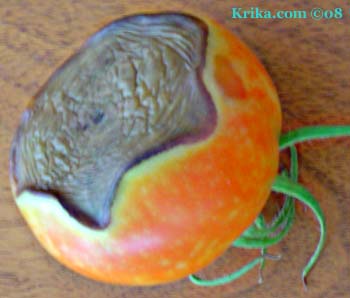 Blossom
End Rot Blossom
End RotThis very strange problem occurs when there is a calcium deficiency along with an excess of nitrogen or water. Nitrogen in the form of ammonia especially is a major suspect in causing the problem. The solution is not difficult and you need not remove plants or plant materials as there is no disease component to the problem. First, begin watering the soil regularly so there are no extremes of soil moisture levels. Second, test the pH of your soil if you can or simply add lime at the following rate: one half pound of lime for every 10 square feet of garden space. This should raise the soil pH by one number. If the problem persists, do a second lime treatment and wait awhile to see what happens. Regular watering and raising the pH of the soil should do the trick. This process worked like a magic trick for our tomatoes and we'll now be using it with our green pepper plants which have had the same problem. Surprisingly in Montserrat where we routinely had extreme acid rain and acidic volcanic ash situation there was no lime of any kind available to farmers or backyard gardeners. Go figure, when we had six just under US $20,000 each Department of Agriculture financed greenhouses awarded to local farmers. Can you imagine greenhouses in the Caribbean? The UK foot the bill for these greenhouses as Montserrat is some sort of 'protectorate. Links
for blossom end rot information: |
|||
|
|||
| Torch Ginger See the "G" Page GINGERS -- Torch Ginger | |||
| **Tourist Tree See The "G" Page -- GUM TREE | |||
 Torpedo
Cuphea, Giant Bat Face Cuphea Cuphea llavea'Torpedo' Torpedo
Cuphea, Giant Bat Face Cuphea Cuphea llavea'Torpedo'Benefits: Much as we do, butterflies hummingbirds find this plant particularly appealing. From: Photographed: In the Botanical Garden at the Hotel Atitlan on Lake Atitlan in Guatemala. Planting and Care: Full sun and routine rainfall or watering will keep this one and a half to two foot tall plant blooming for many months. Text and Photograph ©Krika.com 2008 |
|||
|
|||
|
My #19 Flower Mystery was solved by my friend Ursula G. living in Southern Germany |
|||
| Travelers Palm Tree See the "PALMS AND SAGOS" Page -- Travelers Palm Tree | |||
| Tree Fern See The "F" Page FERNS -- Tree Fern | |||
| Tree Hibiscus See The "M" Page -- MOUNTAIN MAHOE TREE | |||
| Tree of Life See the "K" Page -- KALANCHOE -- Donkey's Ears | |||
 Tree
Tomato, Tamarillo Cyphomandra betecea Tree
Tomato, Tamarillo Cyphomandra beteceaThis is a very appealing little tree. Growing only to about 16 feet in height it can be easily accommodated almost anywhere the climate is warm. Benefits: Fruit bearing From: S. America Photographed: (Tree and flowers) In the Palermo Botanical Garden in Sicily, Italy, and (fruits) in the Botanical Garden at the Hotel Atitlan on Lake Atitlan in Guatemala. Planting and Care: This small fruiting tree often grows at the edge of forests where it enjoys a bit of shade. Depending on the amount of sun it receives it likes more or less water. It is tolerant of soil types, but always prefers it to be well drained. Text and Photographs ©GreenGardeningCookingCuring.com 2012 This Tree Mystery solved by my friend Ursula G. living in Southern Germany |
|||
 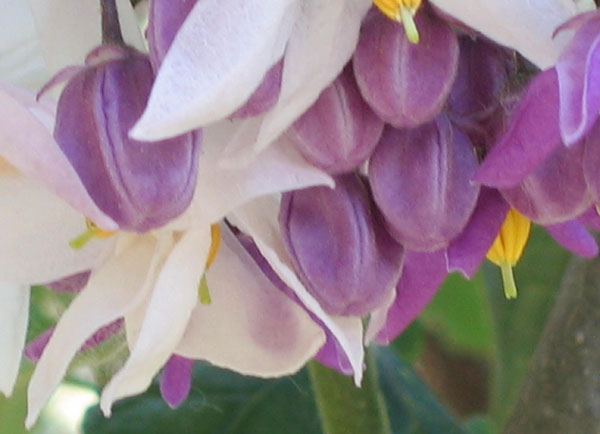 |
|||
|
|||
Tropical
Almond Tree FIX THIS WITH THE
ONE BELOW |
|||
 Tropical
Almond Tree, Country Almond Tree, Indian Almond Tree,
Malabar Almond Tree, Sea Almond Tree Terminalia
catappa Tropical
Almond Tree, Country Almond Tree, Indian Almond Tree,
Malabar Almond Tree, Sea Almond Tree Terminalia
catappaThis is a large tree growing to over 100 feet in height, though I have almost always seen it trimmed of its top. It also seems to grow in tiers with heavy thick branches coming straight out from the trunk. Its leaves are large, leathery and shiny and normally deep green in color. Before shedding its leaves to produce new greenery they become deep red much as they would in a New England autumn. Benefits: The seeds it produces are edible in their entirety and are said to be delicious by folks in Tobago. As well, this tree has many chemical components that have made it useful in herbal medicine. Its leaves have also been used to lessen microbial activity in aquariums and in fish farming. From: Probably tropical climates in the Pacific Photographed: In Crown Point, Tobago, in 2017. Planting and Care: For this tree you will have to place it in a tropical climate garden so it will grow in full sun. It is accepting of all types of soil as long as it drains well. The tropical almond tree is drought and salt air tolerant making it perfect of island life. Text and Photograph ©GreenGardeningCookingCuring.com 2018 |
|||
| Tropical
Gardening Links See The "L" Page -- LINKS and REFERENCES FOR TROPICAL GARDENING |
|||
| Tropical
Hydrangea, Dombea Dombeya wallichii,
Dombeya cayeuxii, Dombeya acutangula This is a visually striking medium sized tree that I stumbled upon in a very unexpected Botanical Garden we discovered when we visited Panajachel on Lake Atitlan in Guatemala. We hadn't been to the small town in more than twenty years and almost all the changes we have seen are just fine with us. I really can't think of another place I could say that about. Can you? Benefits: From: Africa Planting and Care: Plant in bright sun and make sure it receives regular rainfall or watering. It is a fast grower and a lovely bloomer so enjoy! Text and Photograph ©KO 2010 |
|||
  Photographed: In
the Botanical Garden at the Hotel Atitlan on Lake Atitlan
in Guatemala. Photographed: In
the Botanical Garden at the Hotel Atitlan on Lake Atitlan
in Guatemala. |
|||
|
|||
| Tropical
Plants, Seeds and Trees See The "L" Page -- LINKS and REFERENCES FOR TROPICAL GARDENING |
|||
| Tropical Sage See the "R" Page -- RED SALVIA | |||
| Trumpet Creeper -- See Trumpet Vine Below | |||
 Trumpet
Vine, Flame Vine, Trumpet Creeper Campsis
radicans or Pyrostegia venusta or Pyrostegia
ignea or Bignonia venusta Trumpet
Vine, Flame Vine, Trumpet Creeper Campsis
radicans or Pyrostegia venusta or Pyrostegia
ignea or Bignonia venustaThis is a common vine in warmer climates where its ease of care and its exuberant growth make it very popular. Benefits: From: The middle and southern latitudes of S. America -- Brazil, Paraguay, Bolivia and Argentina. Photographed: By the pool at the Hotel Riviera on Lake Atitlan in Guatemala in 2010. Planting and Care: Grow this vine in full sun or bright semi shade for the best results and give it routine rainfall or watering. Text and Photograph ©KO 2011 |
|||
|
|||
| Tulip Torch See the "G" Page GINGERS -- Torch Ginger | |||
Tumeric,
Siam Tulip Curcuma
longa or Curcuma domestica THE
FOLLOWING INFORMATION HAS BEEN GATHERED HERE AND THERE
AND SHOULD BE ACCEPTED AS SUCH. |
|||
| Turk's Cap See the "D" Page -- DWARF MALLOW | |||
|








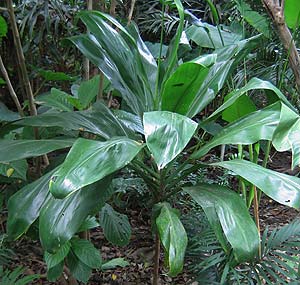 Photographed: At
the Hotel Atitlan on Lake Atitlan in Guatemala.
Photographed: At
the Hotel Atitlan on Lake Atitlan in Guatemala. 
 Flowering
Thai plants
Flowering
Thai plants